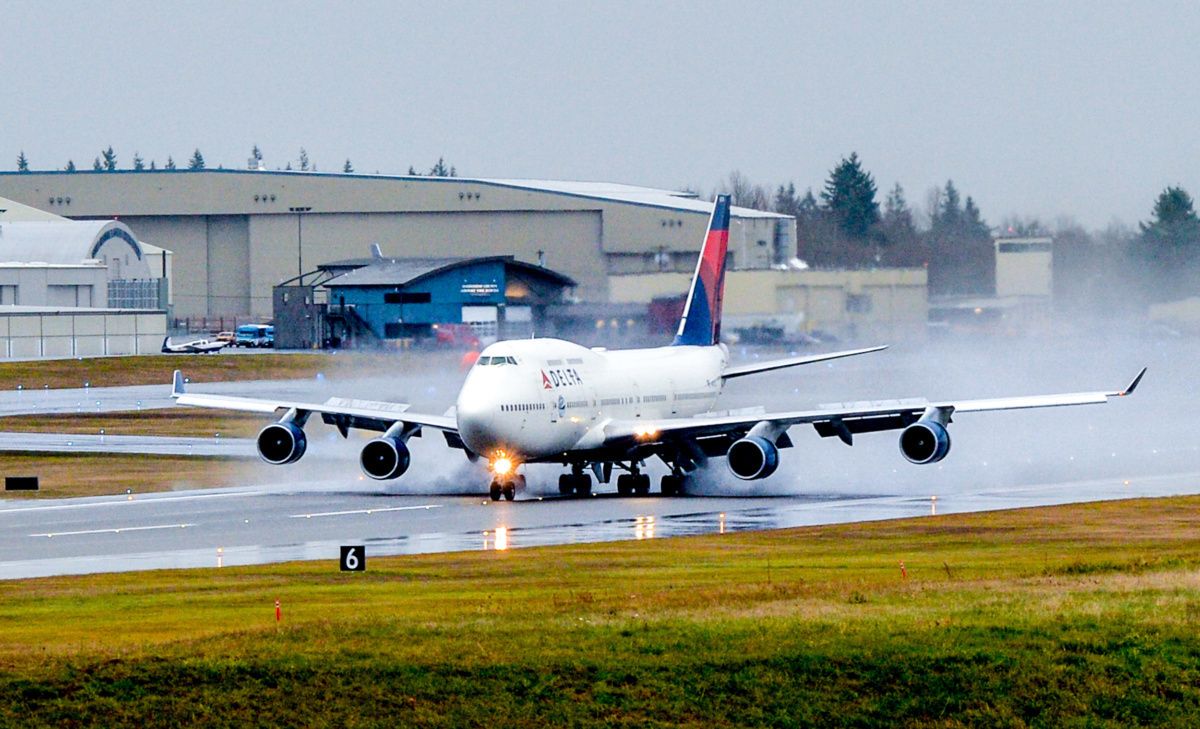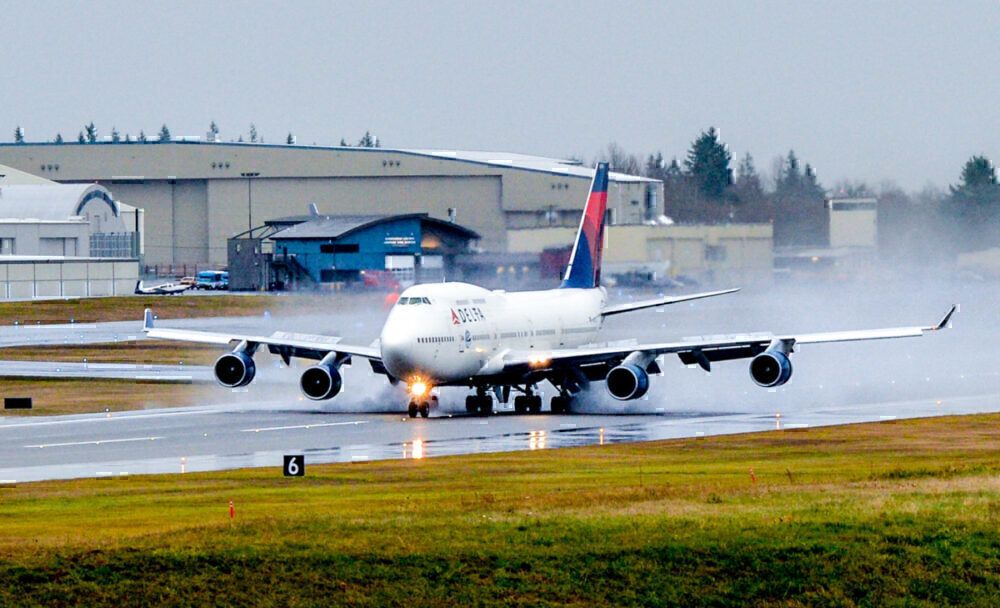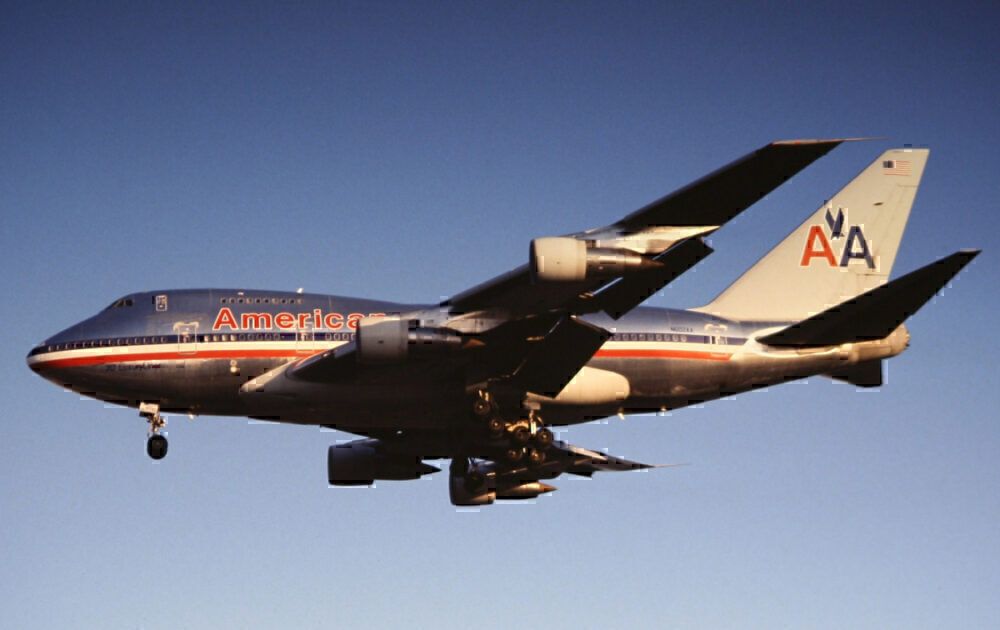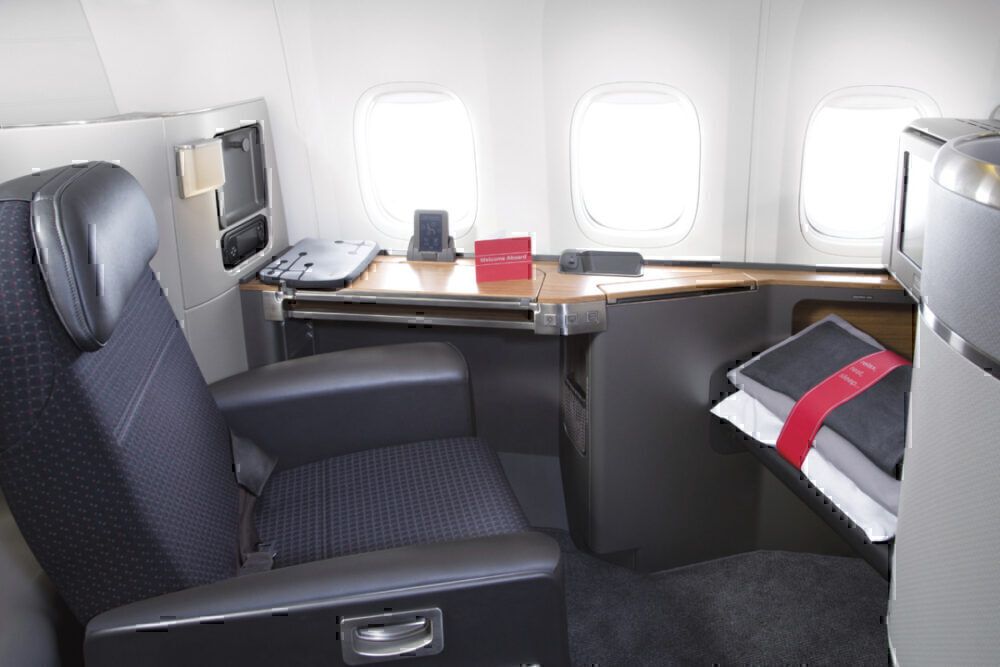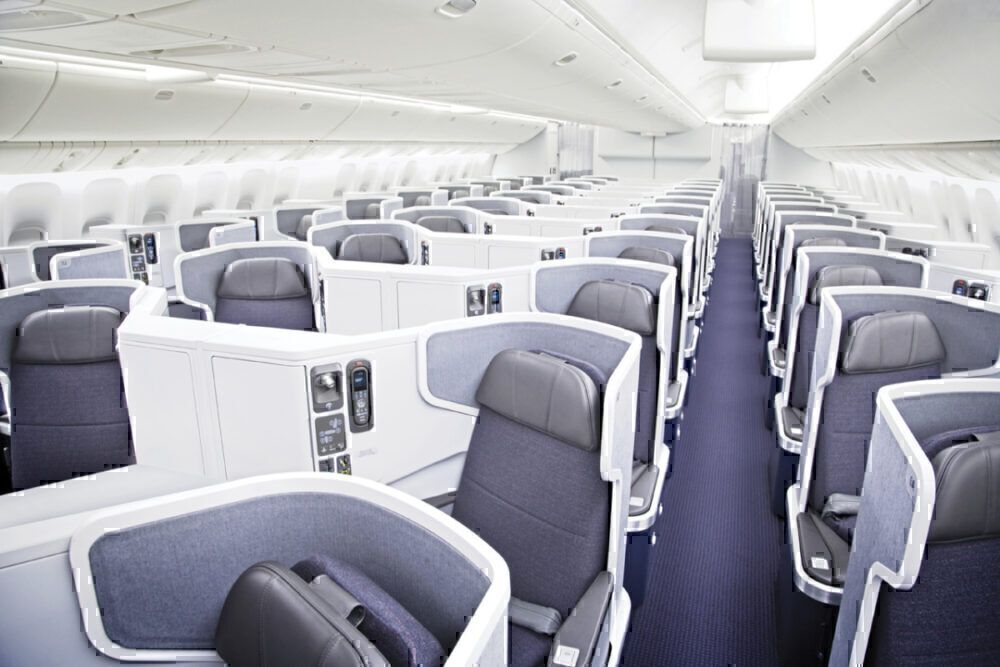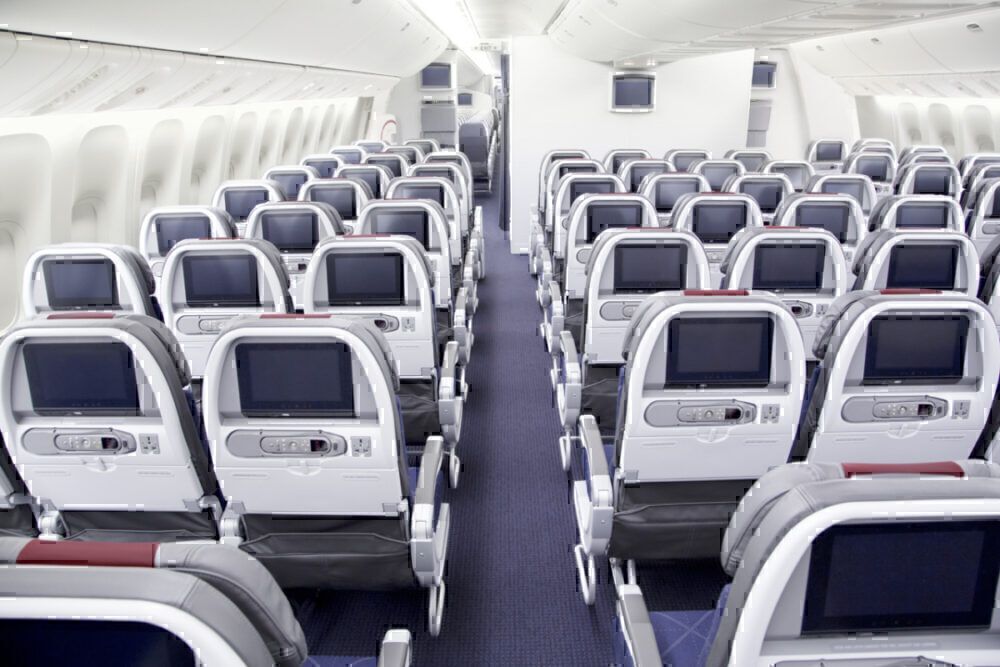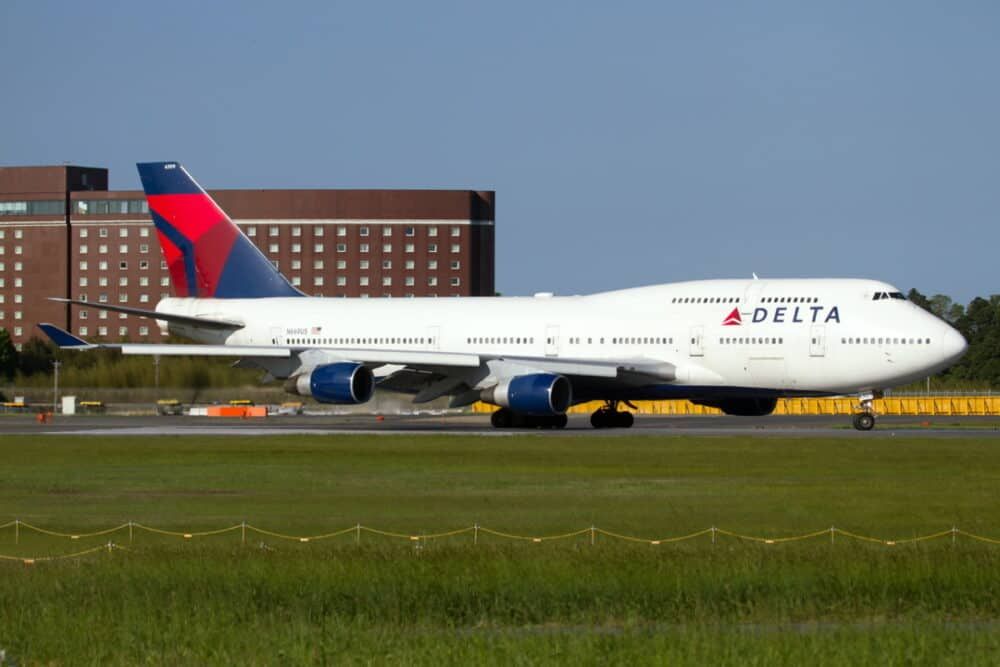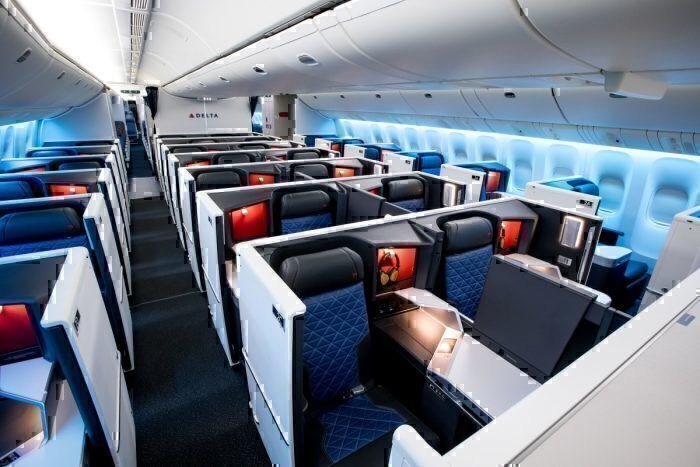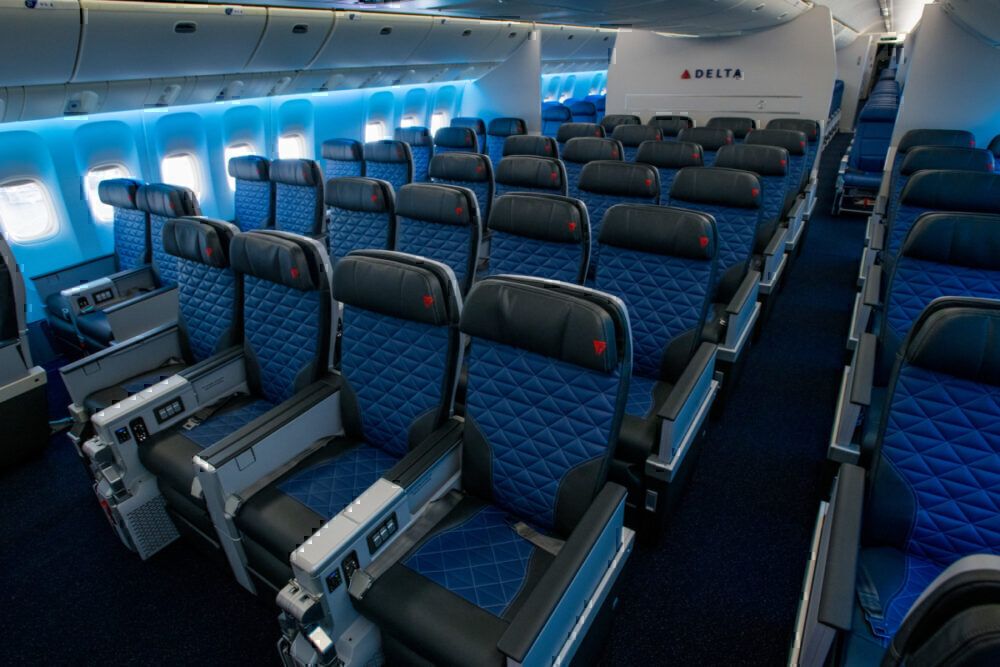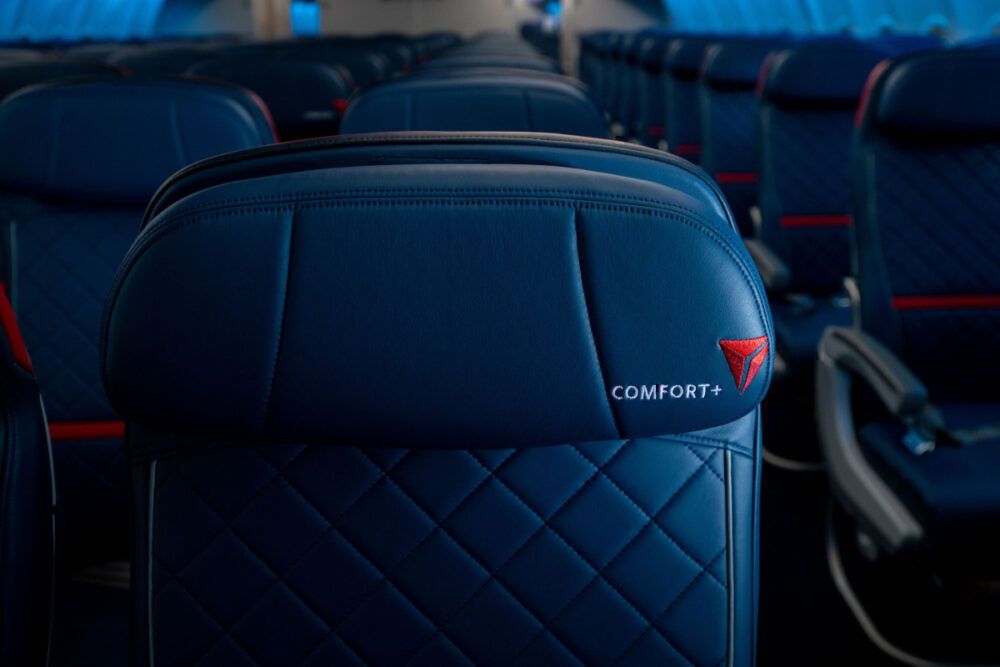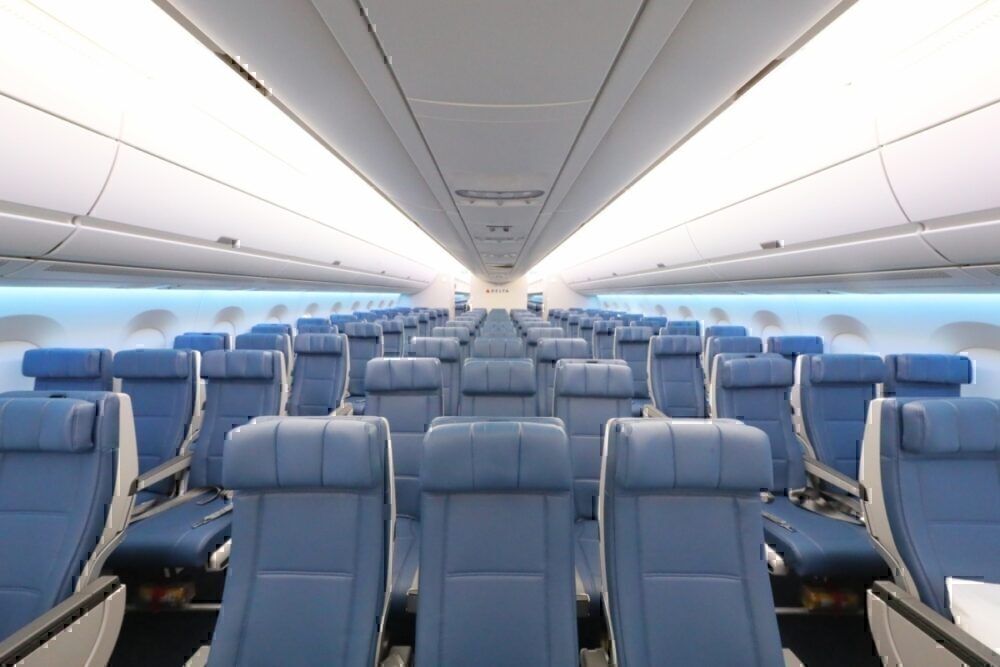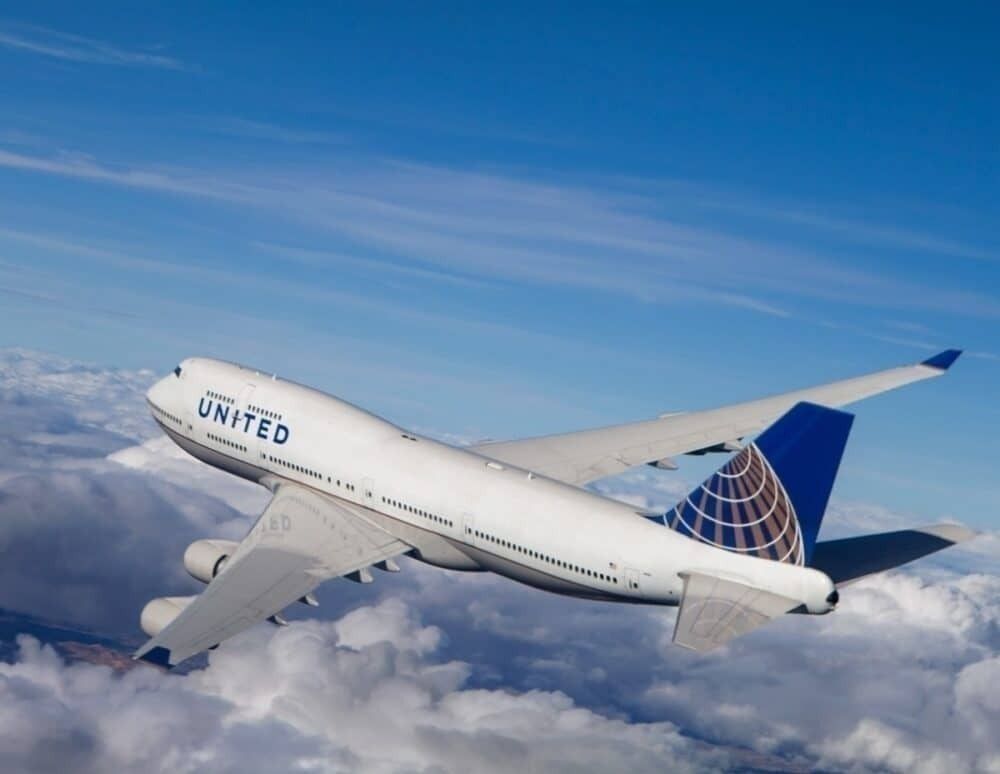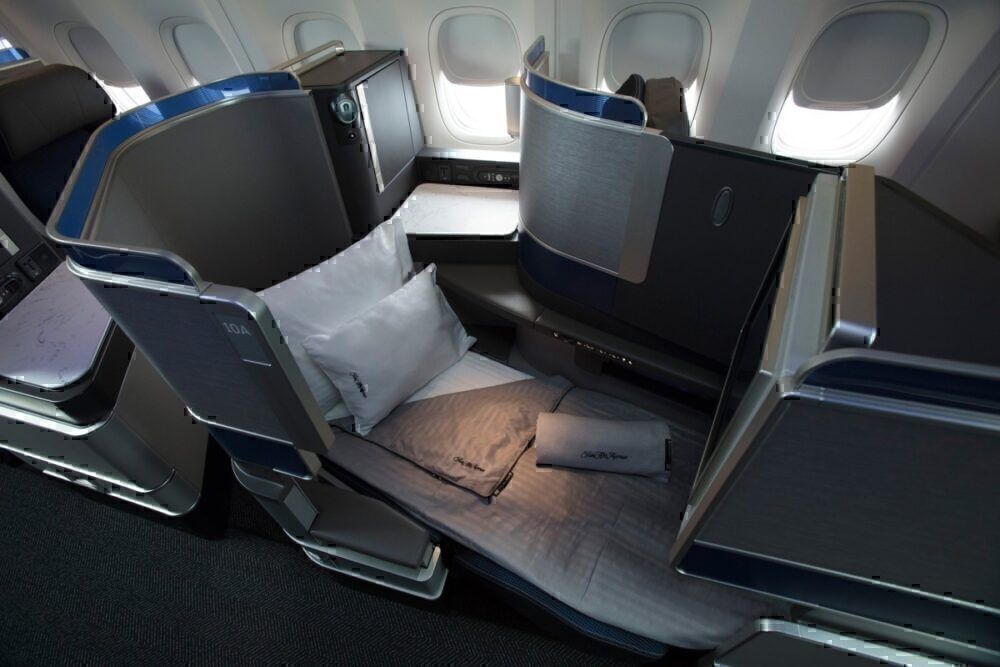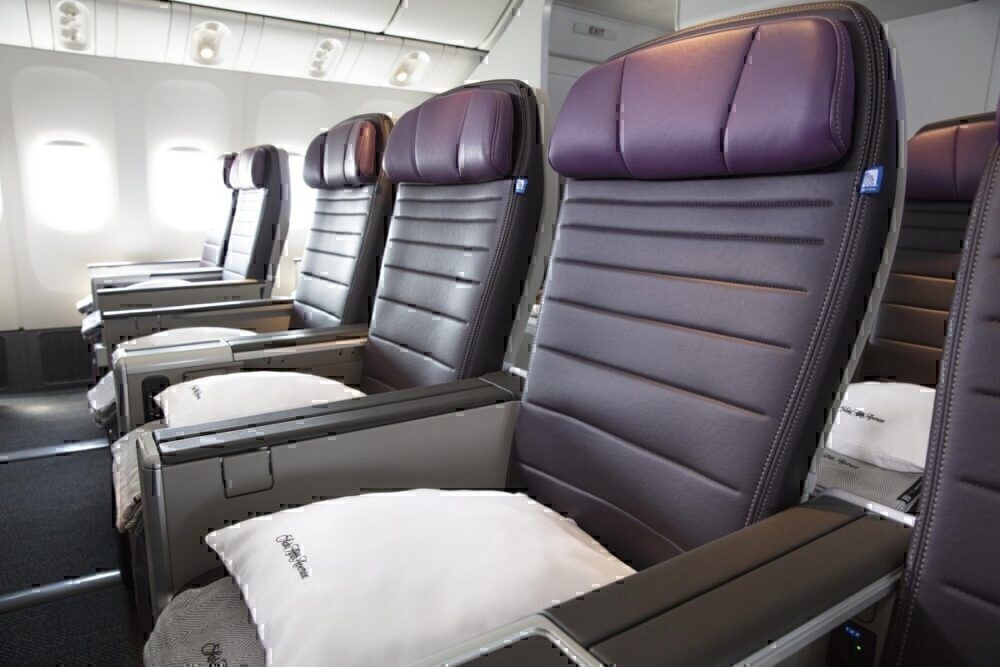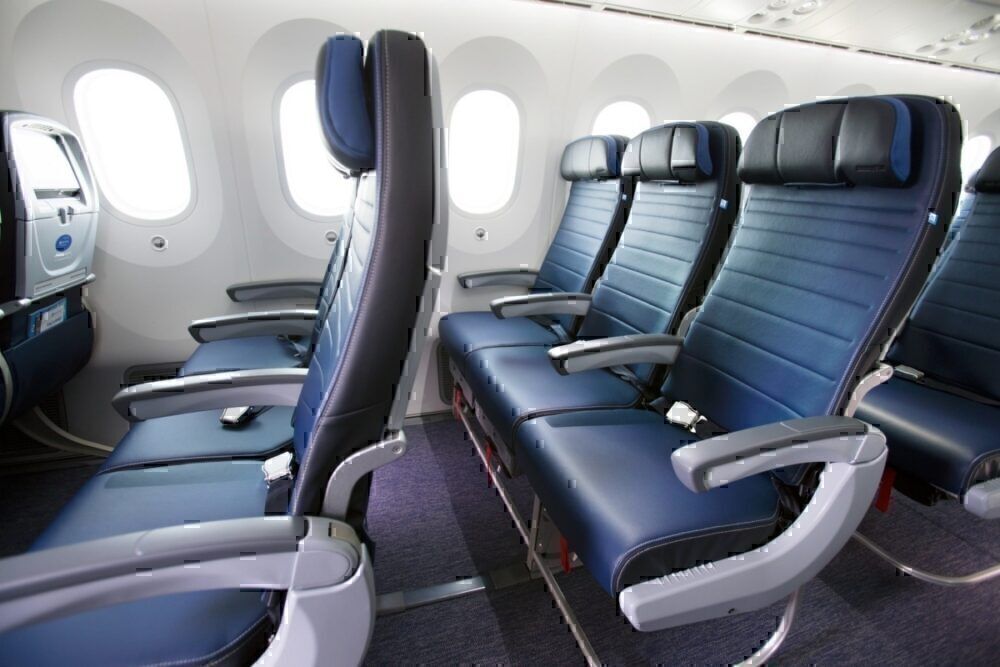The Boeing 747 is an iconic aircraft that all major US airlines have flown at one time or another. It was not that long ago when United Airlines retired its last 747. The same is true for Delta. Now, none of the big three operate any of the types or have orders for them. Which then begs the question: what would those planes look like if US airlines still flew them?
American and the 747
American Airlines has not operated the Boeing 747 since the early 1990s when it flew a couple of the Boeing 747SPs. Since then, the airline has preferred twinjets like the Airbus A300, Boeing 767s, 777s, and eventually the 787s.
Currently, the largest plane in American's fleet is the 777-300ER. This plane seats 304 passengers with eight in Flagship First, 52 in Flagship Business (both of these cabins have lie-flat seating, although there is a little more room in Flagship First), 28 Premium Economy, 28 Main Cabin Extra, and 188 regular Main Cabin seats.
As for a potential 747, it would not be difficult to see American make the 747s just as premium. Flagship First would ideally be suited in the nose of the 747 on the lower deck– similar to Lufthansa's First Class on the 747-8s.
Since Flagship First is intended to be an exclusive product on the ground and in the sky, there would probably be about eight to ten of these up front. American Airlines would be the only US carrier to have an international long-haul first class available as both United and Delta have done away with it.
Flagship Business is the international staple of American's long-haul premium fleet and can be found on all of its widebodies. This reverse herringbone style could easily fit on the 747 in a 1-2-1 configuration on the lower deck and a 1-1 configuration upstairs.
There would likely be between 16 and 20 of the seats on the upper deck with another 32-40 on the lower deck. It is difficult to see American choose to put more than 60 business class seats on the 747s since selling out that many seats would be difficult.
As for Premium Economy, this would be a relatively small section in a 2-4-2 configuration. AA would likely choose to have between 28 and 36 of these on a 747 to ensure that there isn't any overcapacity to deter people away from business class.
In economy, there would definitely be a ten-abreast configuration. As the fuselage narrows towards the end, there would be only a few rows that are eight-abreast. In total, American would likely keep its pure coach class with about 200-220. There would probably be another set of Main Cabin Extra seats with a little more legroom that would be around 30-40 seats.
As for potential routes, many of the existing 777-300ER routes would be likely candidates for a 747. If American chose the 747-8I, this plane could take over routes from Dallas to Hong Kong, Tokyo, and London with little issue.
Delta and the 747
Delta Air Lines most recently operated the Boeing 747 after its merger with Northwest Airlines. Its replacement included the Airbus A350-900, which has become Delta's flagship aircraft. This is the largest plane in Delta's fleet by capacity.
Onboard the A350s, there are 32 Delta One Suites, 48 Premium Select seats, and 226 standard economy seats. This comes out to a total capacity of 306.
The most premium product onboard the aircraft would be the Delta One Suite. On its 747s, Delta had 48 of the herringbone-style Delta Ones– the same kind found on its Airbus A330s. The recent trend at Delta has been to lower capacity in international business class. Thus, on a potential 747-8, Delta would put the Suites upstairs and in the nose in a 1-1 configuration, with perhaps one or two center seats.
Combined, this would work out to about 20-24 Delta One Suites– if not less. Delta would probably add three or four more rows of Delta One Suites behind the first set of doors on the aircraft in a 1-2-1 configuration to take the overall capacity in Delta One to a maximum of 36-40– but that would be pushing it for the airline.
Immediately behind this cabin would be Premium Select in a 2-4-2 configuration. Delta's go-to number for the Premium Select cabin has been 48 on both the A350s and soon-to-be-retired 777s. Much like the case with American, Delta does not want to create overcapacity to deter people from upgrading. But, with limited capacity in Delta One, the carrier would probably stick with around 48 Premium Select seats.
Next up would be coach. Delta's A350s do not include Comfort+. In hindsight, this was probably a mistake on the carrier's part since it added Comfort+ onboard its Boeing 777s. In a 3-4-3 configuration, the 747-400s maintained 42 Comfort+ seats.
Delta could easily do a similar number of Comfort+ seats on the 747– probably maxing out at close to 90-95 seats. There are 90 Comfort+ seats on the airline's Boeing 777s. For passengers on long-haul routes, this would be a good buy-up.
As for economy, there were 286 Main Cabin seats on the 747-400s. Delta would have a smaller number to accommodate the new Premium Select cabin onboard a new 747-8I. Perhaps, this could be closer to 200-230 seats.
In terms of routes, all of the airline's flagship 777 and A350 routes would be easy targets. This includes strong hub-to-hub markets like Shanghai to Atlanta or Detroit, Seoul to Atlanta or Detroit, or Atlanta to Amsterdam or Paris.
Stay informed: Sign up for our daily aviation news digest.
United and the 747
United only retired its last Boeing 747-400 a few years ago in favor of Boeing 777s and 787s. Onboard the 777-300ER, there are 60 Polaris business class seats, 24 Premium Plus seats, 62 Economy Plus, and 204 standard economy seats.
Much like Delta, United is moving away from long-haul international First Class. The carrier would likely keep Polaris on its aircraft. On the upper deck, this would probably be in a staggered 1-1 configuration.
Due to how efficient the Polaris configuration is, there could be as many as 16 of the seats on the upper deck. On the lower deck, United could probably fit a similar number in the nose. Behind the first set of doors, another 32-or-so seats could round out the Polaris cabin at about 64.
Behind this, Premium Plus is United's version of premium economy. There are only 24 of these seats in a 2-4-2 configuration on the 777-300ERs. United does not like a big premium economy cabin, so sticking with 24 seems likely for the airline.
Economy is undergoing a bit of a change under Scott Kirby. The airline is doing away with a large number of its extra-legroom seats and planning to put more economy seats instead. There probably would not be more than 40 Economy Plus seats on a 747-8I in a 3-4-3 configuration.
Rounding this out, anywhere from 240-260 seats in economy would complete the aircraft. This would also be in a standard 3-4-3 configuration.
United has one of the most global route networks in the world. The 747-8Is would take some of the carrier's most important routes– likely out of its hub in San Francisco off to places like Beijing, Frankfurt, and Hong Kong. This aircraft could also do some transcontinental flights that the 787-10 currently serves.
Do you wish the US airlines would return to fly the Boeing 747? What do you think US airlines' Boeing 747-8Is would look like? Let us know in the comments!

